Sabudana Usal (Fluffy Sabudana Khichdi for Vrat)
This sabudana usal is a unique and healthy Indian breakfast recipe. It’s filling, fluffy, flavoursome, and 100% traditional.
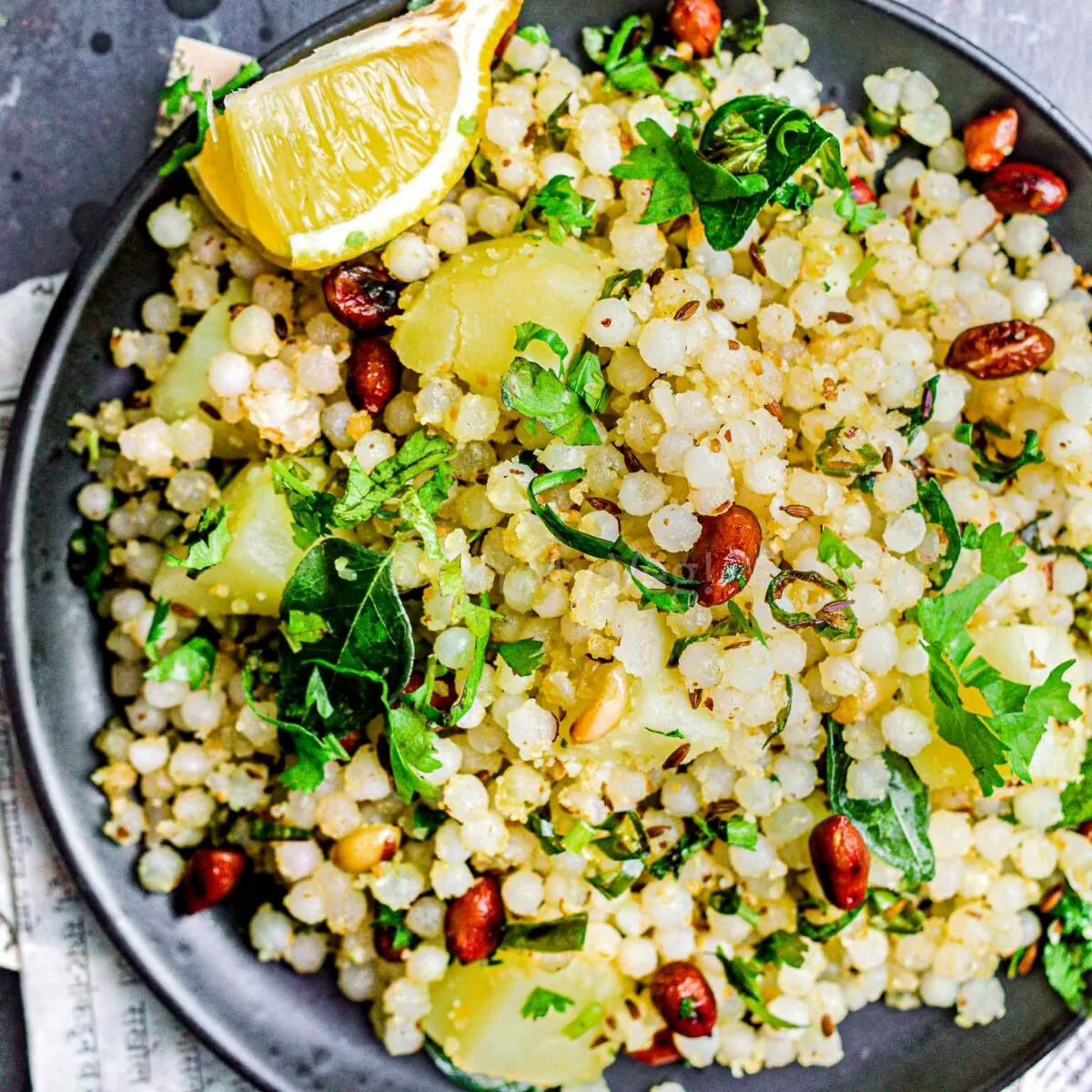
I love making sabudana usal (or sabudana khichdi, as it’s more commonly known) for fasting, especially during Indian festivals like Navaratri. I’m not alone — this is one of the most popular Navaratri recipes along with sabudana vada.
In this case, fasting doesn’t mean completely abstaining from food, just avoiding certain ingredients (especially meat and alcohol). For Hindus (and some Buddhists, Jains, and Sikhs), it’s believed fasting purifies the mind and body, allowing you to come closer to religion.
At the heart of the dish is sabudana (tapioca pearls). Knowing how to cook sabudana is essential to fluffy, non-sticky sabudana that everyone will love. Once you learn all my expert tips and tricks, you’ll be craving sabudana usal every week, not just during fasting periods!
Despite what you might think, sabudana khichdi is far from plain and boring. It’s loaded with explosions of flavour, from the nutty and smoky roasted peanut powder, a dash of sugar, citrusy curry leaves, warm cumin seeds, heat from green chilis, buttery potatoes, a squeeze of lemon juice, and freshly chopped coriander.
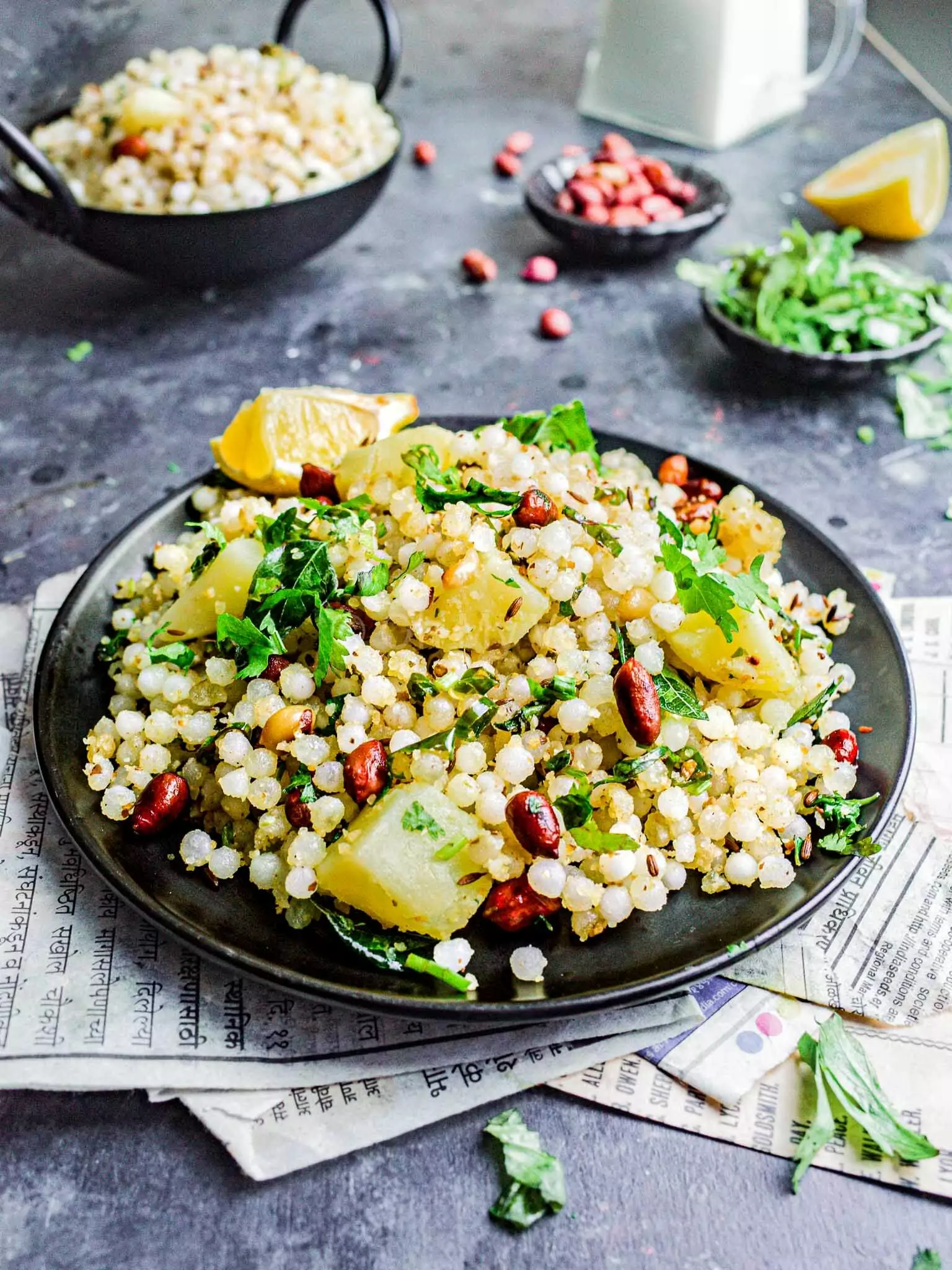
What is Sabudana Usal?
Sabudana usal is a beloved Indian breakfast dish. It’s usually eaten as vrat (fasting food) for Hindu festivals like Navaratri, although in some states — like Maharashtra, Gujarat, Madhya Pradesh, and Karnataka — the dish is popular as a daily affair.
Sabudana khichdi is naturally gluten-free. The primary ingredient is sabudana (known in English as tapioca pearls/balls), a processed ingredient with an interesting history … more on that later!
We mix the tapioca pearls with fried peanuts, green chilis, boiled potatoes, earthy cumin seeds, lemon juice, and fresh coriander to make sabudana khichdi. In Marathi, the dish is sometimes called sabudana usal and may be tossed with ground peanut powder — like in this recipe.
Sabudana is a relatively new ingredient in Indian cuisine, having found popularity in the 1940s. It was originally introduced as a rice substitute after a rice famine. It later made its way into countless Indian dishes, like sabudana usal, sabudana vada, sabudana thalipeeth, and sabudana kheer, as it was a vrat-friendly ingredient.
Sabudana Usal Ingredients
You’ll only need around 10 ingredients to make this sabudana usal recipe. That’s sabudana (tapioca pearls), nuts, vegetables, spices, and fresh herbs. If you need to head out shopping, use this as a grocery list. I recommend your local Asian store, or if you’re somewhere more remote, Amazon is always a good shout.
- Sabudana, also known as sago (this is an incorrect translation since sabudana and sago are made from different ingredients — sago is made from palm sap), tapioca pearls, or tapioca balls, is the main ingredient. It must be purchased in a dried form and then soaked overnight to rehydrate.
- Potato is optional, but I love adding it to bulk out the sabudana khichdi. It’s buttery and soft. Use starchy potatoes rather than waxy ones.
- Peanuts are roasted and then added. I keep half whole and grind half into a powder. The whole peanuts add crunch, while the ground peanuts provide a pleasant nuttiness. I like pink-skinned peanuts best.
- Groundnut oil is the traditional Maharashtrian choice and pairs beautifully with the ground
and whole peanuts. Gingelly oil, sunflower oil, or ghee (this recipe would no longer be vegan) are great substitutes. - Cumin seeds offer pops of warm, sweet, nutty flavour.
- Green chilis bring the heat — specifically, a sharp, crisp, smoky spice.
- Curry leaves provide citrusy brightness. Always try to use fresh; they are typically available at your local Asian grocery store or Amazon.
- Rock salt is used during fasting (vrat) instead of regular table or sea salt. It’s called called Himalayan salt!
- Sugar balances out the flavours beautifully.
- Lemon juice adds a pleasant burst of acidity and helps the sabudana not stick together.
- Fresh coriander is the final lemony lift the plate needs.
For ingredient quantities, please scroll down to the recipe card below.
Which Sabudana to Use for Sabudana Khichdi?
There are three types of sabudana available in the market:
- Small sabudana is best for sabudana kheer or payasam.
- Medium sabudana is my first choice for sabudana khichdi and sabudana vada.
- Large sabudana is ideal for boba tea.
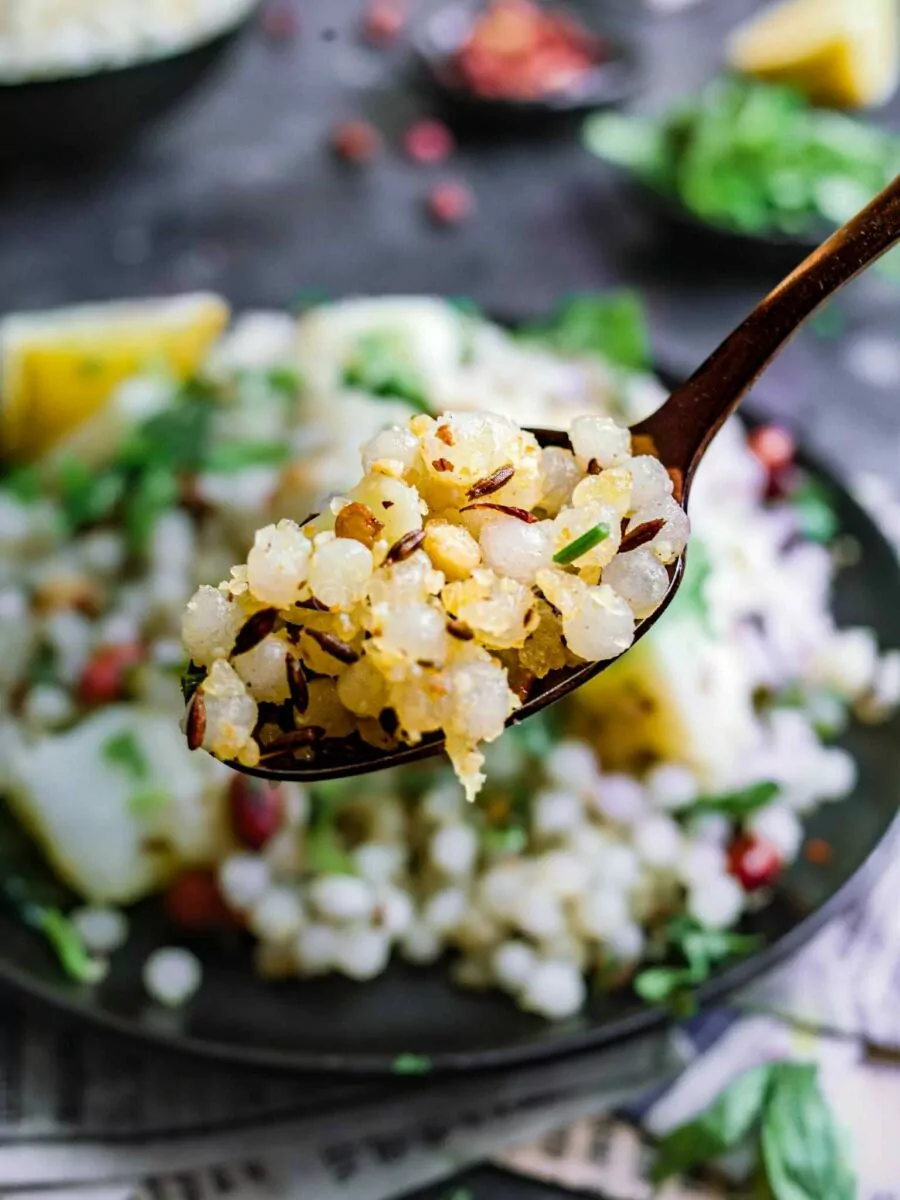
How to Make Sabudana Usal
If you break the process down into short, digestible steps, making this recipe doesn’t seem too difficult. Like most Indian recipes, once you understand the process, the actual cooking is a breeze.
Familiarise yourself with these basic steps and for more detailed instructions, see the recipe card below.
- Soak the sabudana overnight.
- Boil the potatoes until knife-soft.
- Dry-roast peanuts 2/3rds of the peanuts then grind them into a fine powder.
- Mix the sabudana with salt, sugar, and ground peanut powder.
- Sautée cumin seeds, green chilis, curry leaves, whole peanuts, potatoes, and soaked sabudana. Mix well.
- Add the lemon juice, salt, and fresh coriander. Stir to coat and serve.
Cookware You Need
Expert Tips for Fluffy, Non-Sticky Sabudana Khichdi
Too many people avoid sabudana usal because when cooked incorrectly, it can become gluey and sticky. If you understand why this happens, you can easily avoid the issue and make fluffy, soft sabudana khichdi with no issues! Here are my expert tips:
- Rinse your tapioca pearls! Just like rice, you need to rinse the tapioca before soaking it. This will remove excess starch — the element that causes sticky sabudana usal. Wash the sabudana until the water runs clear.
- Don’t oversoak the sabudana. How to soak sabudana for khichdi? Add the precise amount of water (in the recipe), leave it overnight, and the sabudana will completely absorb the water, without any excess stickiness.
- Don’t overcook the sabudana usal. You’d be surprised at how quickly sabudana khichdi cooks! Like kande pohe, it needs just a few minutes in the pan.
- Avoid over-stirring the sabudana as it cooks. Mix it just enough to infuse the flavours and coat everything well, no further.
If you follow these easy tips, it’s going to revolutionize your sabudana usal game.
Variations for Sabudana Usal:
This recipe is the authentic, traditional sabudana khichdi.
Want to experiment with added ingredients, swap some components around, or change some elements for dietary reasons? I’ve made a comprehensive list of variations for the dish split into two categories.
Variations for Navratri fasting:
- Sabudana khichdi without potato is an easy adjustment. I love making sabudana khichdi with potatoes as the potato helps to reduce the risk of stickiness (potatoes absorb moisture). However, this recipe is quicker without having to boil or steam potatoes, so feel free to leave it out!
- Sabudana khichdi without peanuts would be a nut-free version of this recipe. While the traditional Maharashtrian recipe uses peanuts, roasted chickpeas, crunchy sunflower seeds, or crunchy lentils would be a good substitute.
- Sabudana khichdi with curd is a refreshing cooling summer recipe with a completely different texture. The flavorings are the same, but we add yogurt right at the end of cooking, producing a tangy flavor and softer texture.
- Sabudana khichdi with tomato is fine to eat during fasting periods. It gives the dish a subtle tangy and sweet flavor. Add them after the green chilis and curry leaves, but cook only until softened.
- Surprisingly, you can make sabudana khichdi without oil very easily. Simply dry-roast all the ingredients in the recipe order and add a splash of water if things stick to the pan.
Non-vrat friendly variations:
- Sometimes I like to add turmeric powder for its benefits, earthy flavor, and golden color.
- Sabudana khichdi with onion is the non-vrat version of this recipe, which is a fasting-friendly sabudana khichdi without onion and garlic. Add chopped onion after green chilis and curry leaves.
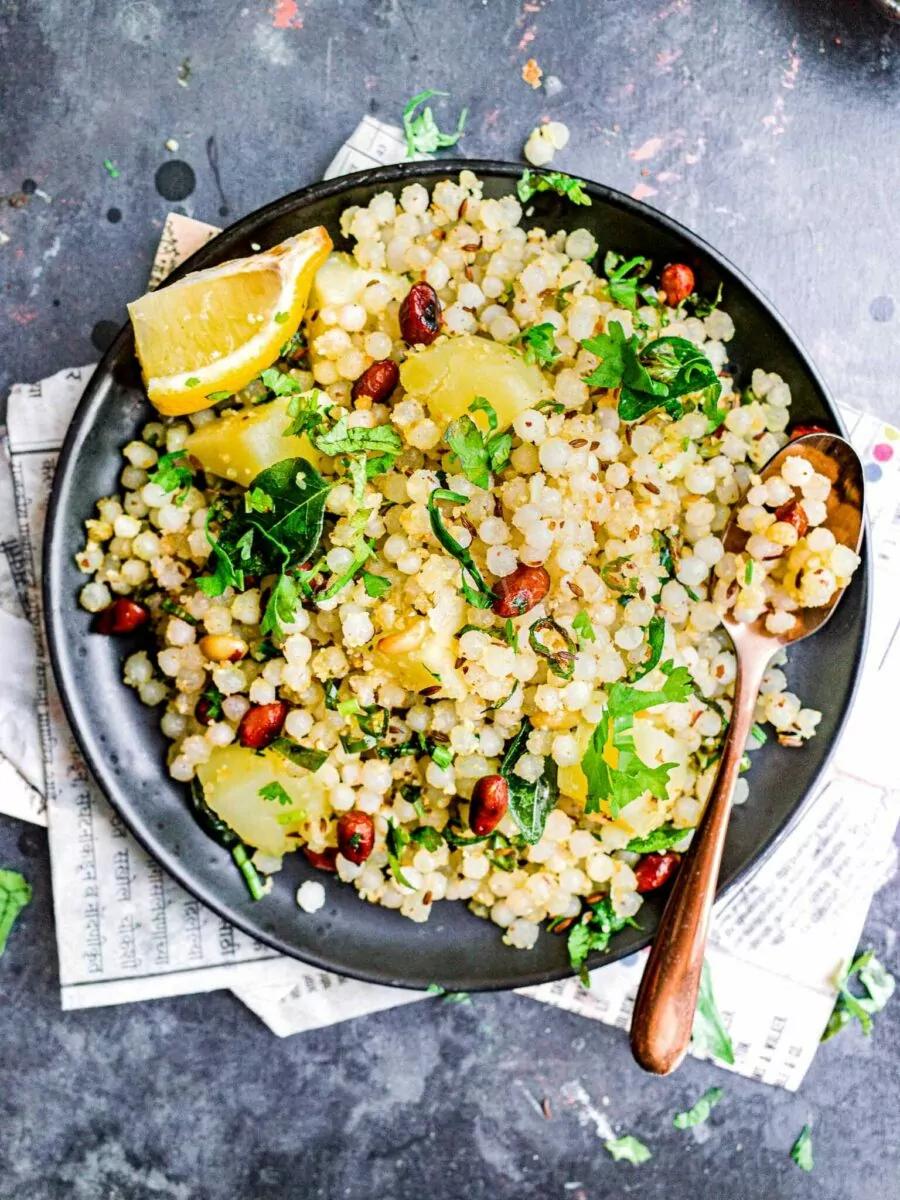
What to Eat With Sabudana Khichdi
Because sabudana usal is a breakfast dish, I like eating it without any side dishes.
However, chilled yogurt, simple cucumber raita, or coconut chutney pair excellently with sabudana usal. All of these options are also suitable for vrat!
How to Store Sabudana Usal
While sabudana usal tastes best when it’s fresh and hot, you can store leftovers in the fridge for 2-3 days. Reheat in a pan or microwave.
You can freeze sabudana khichdi. Place it in a freezer-safe container and freeze for up to 2 months. Defrost and reheat.
Optionally, if you want to plan, you can freeze soaked tapioca pearls and keep them in the freezer whenever you want to make a batch of sabudana khichdi. You can make a large batch and portion it into serving sizes before freezing for ease of use.
This Recipe Is:
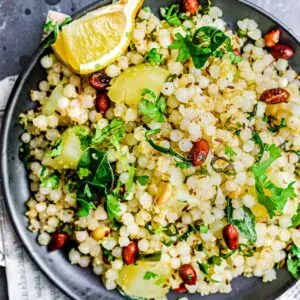
Sabudana Usal (Fluffy Sabudana Khichdi for Vrat)
Ingredients
- 100 g medium sabudana tapioca pearls
- 120 ml water to soak the sabudana
- 60 g potato peeled and cut into cubes
- 3 tablespoons pink peanuts raw
- ½ teaspoon rock salt or to taste*
- ¼ teaspoon white sugar
- 1 tablespoons groundnut oil
- 1 teaspoon cumin seeds
- 3 green finger chillies finely chopped
- 1 sprig curry leaves
- 1 ½ teaspoon lemon juice
- 1 handful fresh coriander cilantro, finely chopped
Instructions
- Wash 100 g medium sabudana until the water runs clear. Then, add to the sabudana to a small bowl and cover with 120 ml water (cold). Cover the bowl with a plate and leave to soak overnight.
- The next morning (or after a minimum of 6 hours), wash the sabudana again, this time with warm water. To check if it's fully soaked, press one of the tapioca pearls between your fingers. It should break easily.
- Steam or boil 60 g potato until knife-soft. Once cooked, drain any water and "fluff up" the potato by gently shaking in a colander. Set aside.
- Set a tawa or saucepan over medium heat. Add 3 tablespoons pink peanuts to the pan, and dry-roast until the skins have charred.
- Take 2 teaspoon of the roasted peanuts (we'll leave the final 1 teaspoon whole) and grind them to a coarse powder.
- In a large bowl, add the peanut powder, ½ teaspoon rock salt, and ¼ teaspoon white sugar to the tapioca. Gently mix.
- Add 1 tablespoons groundnut oil to a kadai or non-stick frying pan over medium heat. Once the oil is hot, add 1 teaspoon cumin seeds. Let them crackle, then add 3 green finger chillies (finely chopped) and 1 sprig curry leaves. Stir, then add the whole peanuts, boiled peanuts, and soaked sabudana. Stir gently and cook for one minute.
- Finish with 1 ½ teaspoon lemon juice and 1 handful fresh coriander (finely chopped). Fluff the sabudana with a fork before serving.





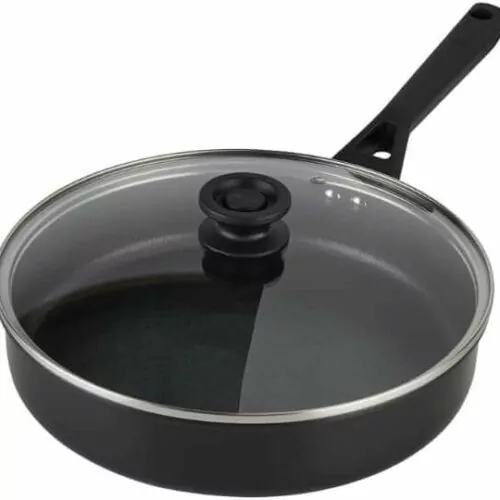
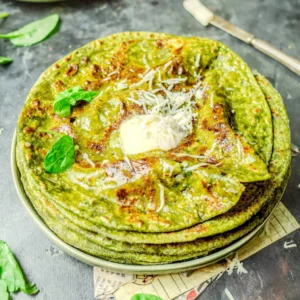

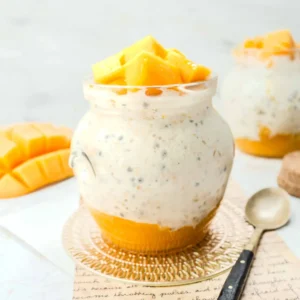



Comment:
Hello! I just wanted to say that this recipe for Sabudana Usal looks absolutely delicious. I love the idea of using tapioca pearls as a base for a savory dish, and the addition of potatoes, peanuts, and spices sounds like a perfect combination of flavors.
I also appreciate the detailed instructions and tips for avoiding sticky sabudana.
I can’t wait to try this recipe for myself. Thank you for sharing it!